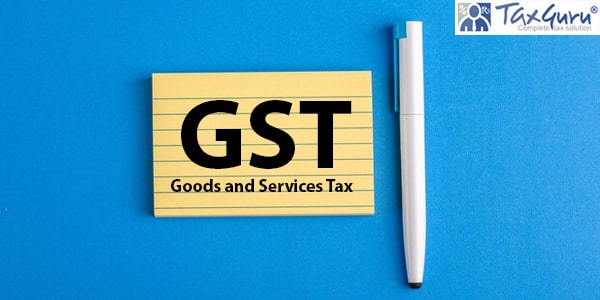Key changes in ITR forms for A.Y. 2019-20 and new disclosures
♣ All the taxpayers are mandatorily required to file their ITRs electronically except individuals over the age of 80 years who have the option of filing the ITR in paper format as well
♣ Recently, the Indian government has notified new tax return forms for FY 2018-19 (assessment year 2019-20) applicable for individuals, corporates and other category of taxpayers. The new forms contain several additional disclosure requirements vis-a-vis the previous year’s forms.
♣ The changes take into account the amendments made by the Union Budget 2018 in the Income-tax Act, 1961. The additional information being sought in the revised tax return forms will not only facilitate automatic cross-validation of data by the tax department but is also expected to quicken the process of tax refund and assessments.
♣ This article focuses on some of the key points to be taken note of by individual taxpayers while filing their tax returns this year.
Identifying the suitable form
The first step would be to identify the tax return form applicable for an individual taxpayer, as below:
- ITR 1 (SAHAJ): resident and ordinarily resident (ROR) individuals having total income of up to 50 lakh, having income from salaries, one house property, income from other sources and agricultural income up to Rs. 5,000.
Non-residents cannot file ITR-1, irrespective of their source or quantum of income.
- ITR-2: Individuals not having income from profits and gains of business or profession (who cannot file ITR-1).
- ITR-3: Individuals having income from profits and gains of business or profession.
- ITR-4 (SUGAM): Individuals, and firms (other than LLPs), being a resident, having total income up to 50 lakh and having income from business and profession computed under the presumptive taxation scheme.
Key changes in ITR forms
ITR 1
The significant change in form ITR-1 is the restriction on its applicability for the following resident individuals:
- A person who is a director in any company;
- A person who has held any unlisted equity shares at any time during the year;
- A person who has claimed a deduction towards expenses incurred for earning income from ‘other sources’ other than deduction for family pension; and
- A person who is assessable for any income on which tax has been deducted at source in the hands of any other person. This would be applicable in cases where the income earned by the taxpayer’s spouse or any other person is required to be clubbed in the taxpayer’s hands and there was a tax deduction at source on such income.
The above resident individuals will now have to file the detailed form ITR-2 / other tax return form, as applicable irrespective of the amount of their total income during the year. Like last year, resident individuals who have foreign assets (including financial interest in any entity) or signing authority in any account located outside India will be required to file ITR-2.
ITR-1 has also introduced certain additional disclosure requirements towards income from house property wherein taxpayers are required to specify whether the house was self-occupied during the year or was let out on rent. Individuals filing ITR-1 are now also required to disclose exempt income such as dividend; agricultural income below Rs. 5,000; amount received under a life insurance policy or from a recognized provident fund, etc.
ITR 2
Significant changes have been brought in the new form ITR-2 which is likely to impact a wide section of taxpayers. Detailed disclosure has been introduced with respect to taxpayer’s residential status in India. Apart from specifying the status as ‘resident’, ‘resident but not-ordinary resident’ or ‘non-resident’, taxpayers are also required to select the condition based on which the residential status has been determined, i.e as per the number of stay days in India in the relevant tax year and previous years.
Non-resident individuals are now required to mention their country of residence, along with their taxpayer identification number in such jurisdiction. Non-residents who are Indian citizens or person of Indian origin are also required to mention the total period of stay in India for the year and in the preceding four years.
Individuals who are directors in any company are required to provide the name of the company, its permanent account number (PAN), director identification number (DIN) and information on whether the company’s shares are listed or unlisted. Individuals holding unlisted equity shares at any time during the year are required to disclose the name of the company whose shares are held, company’s PAN, number of shares held, shares acquired/sold during the year along with their cost of acquisition/sale consideration.
The scope of reporting foreign assets has been expanded to include details of foreign depository and custodial accounts, foreign equity and debt interest held at any time during the relevant period.
There are additional disclosure requirements to specify long-term capital gains from sale of equity shares or units of equity-oriented funds. In case of capital gain from transfer of immovable property, additional details regarding the buyer and the property are required to be disclosed. In case of agriculture income, the location of agricultural land, its measurement, etc are now required to be disclosed.
ITR 3
The additional disclosures discussed for form ITR-2 pertaining to residential status, directorship in companies, investment in unlisted equity shares, income from house property and other sources, foreign assets, etc. have also been incorporated in Form ITR-3.
Other changes introduced in form ITR-3 include disclosure of name and PAN of partnership firms in which the individual taxpayer was a partner during the year, details of audit under any other statutory law. The new form ITR-3 bifurcates the existing profit and loss account into trading account, manufacturing account and profit and loss account which will be applicable for taxpayers who have income from business or profession, etc. The form also seeks details of annual value of outward supplies as per the goods and service tax (GST) returns filed.
ITR 4
This form is applicable for taxpayers who have presumptive income under the tax laws. The changes introduced in the other forms have also been suitably incorporated in ITR-4.
As per the new form, individual taxpayers who have presumptive income and also hold directorship in companies or hold shares of unlisted company will not be eligible to file form ITR-4. Such taxpayers will need to file form ITR-3.
Conclusion:
The new tax disclosure norms are in line with government’s resolve to bring in more transparency and increase the tax base. It is imperative that taxpayers should carefully evaluate the information required to be furnished and provide complete details to avoid any unnecessary disputes and litigation at a later stage.





















Sir I am legal profession, civil contractor and done trading in F&O , loss(10lkahs) in 2018-19 ,which itr to file & i have mutual funds 2 lkahs it is necessary to mention
Sir I am civil contractor and doing trading in F&O , loss in 2018-19 ,which itr to file
I have recently become an NRI and am a retired armed forces officer .I have no income from any other source either In India or here except the Army pension from India . How am I affected now when I file my ITR
this year as compared to earlier years
Hello,Please lemme know when a mutual fund sold the shares of co. will a shareholder is required to pay tax or the mutual fund pays the tax & when a shareholder sells the units of mutual fund it is taxable u/s 112A